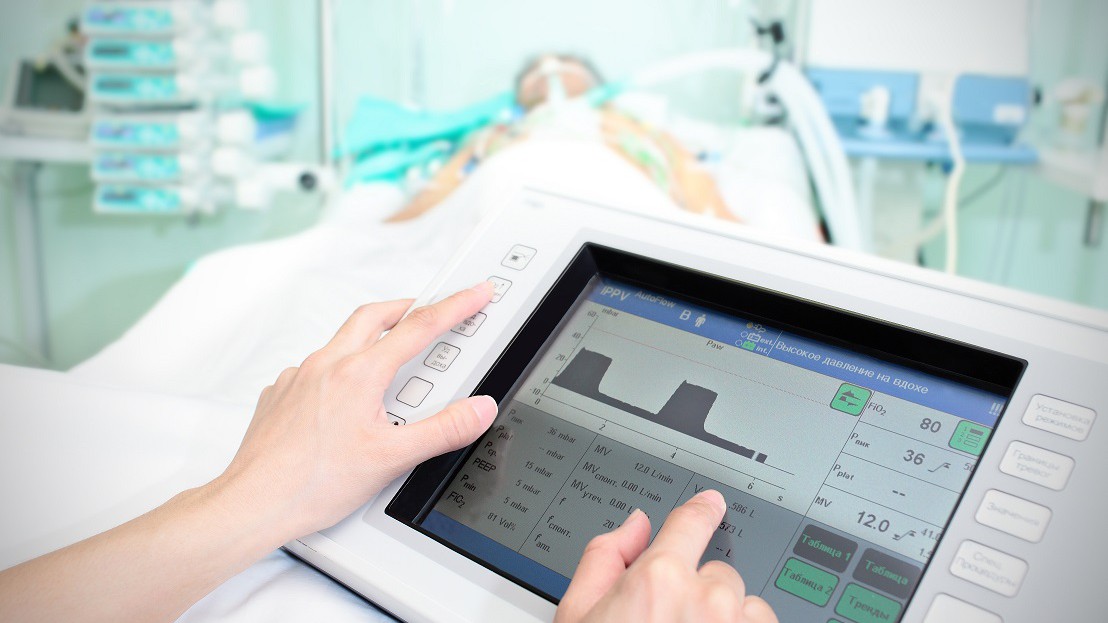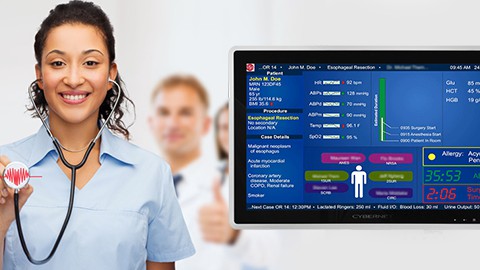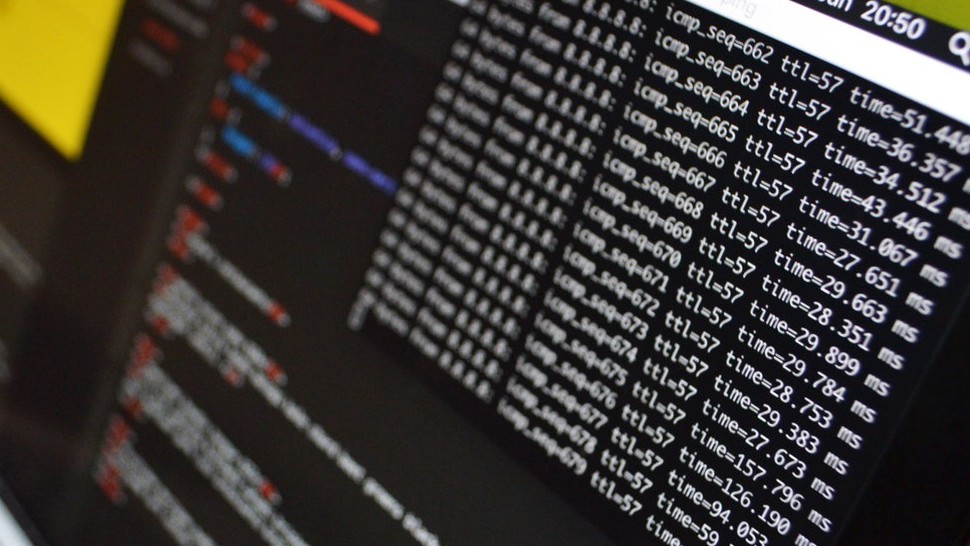An explosion of new medical inventions is great news in all but one respect: asset management.
A wealth of cutting-edge devices helps patients and staff, but it also means keeping track of a flood of new gear. Unfortunately, storage space and logistical systems don’t always get the same level of attention as the shiny new technology coming into the hospital.
So, how does a modern hospital manage this glut of new devices?
How can hospitals use medical computers to implement the same kind of asset tracking that has served warehouses and industry so well?
Locating Equipment
Article Guide
The first two questions asked by any asset management project are “What do we have?” and “Where is it?”
The asset tracking chain has to begin when the machine, tool, or supply item arrives. As soon as it comes off the truck, a barcode or RFID tag should be applied, defined, and scanned into the system. This should include the initial install location of the item, cost, expected life cycle, and any other relevant information.
Once this information has been entered into the system, it’s just a matter of education and policy to make sure hospital staff are scanning equipment when it gets moved to a new location. Almost every room has a computer on wheels or medical tablet nearby, which can then use built-in barcode and/or RFID scanners to keep every piece of gear cataloged and ready.
Reduce the Time Spent Hunting for Medical Gear
According to a survey of over 1,000 nurses, a third of nurses spend 1 hour each shift just trying to find commonly-used equipment. 16% said they experienced incidents where they eventually just gave up looking and did without the equipment in question. The survey also found that mattresses, pumps, thermometers, keys, and IV stands were the equipment that tended to disappear the most.
A central asset management database tied to scanner-equipped medical tablets and computer carts would allow staff to look up the gear they need. The database could even be configured to display a map of that particular room or floor, guiding the nurse or doctor right to the location of the wayward instrument.
Fighting Theft
According to a report by ADT Healthcare, an estimated 52 million dollars in medical supplies and equipment are stolen by patients every year.
ADT found that most patient theft happens, not surprisingly, right in the patient’s room. Items like scrubs, linens, pillows, and phones are the most common targets, but patients have stolen otoscopes, blood pressure cuffs, and desk chargers. Even wall clocks have found their way into patient backpacks and purses, if you can believe it.
With expensive or bulky items tagged with RFID, and less expensive items printed with barcodes, tracking theft becomes much simpler. With each item tagged to each room, and each patient scanned into the same room, it’s not difficult to match the missing item with the potential pilfering patient.
It’s essentially a system not unlike the mini-bar at a hotel. The hotel knows who’s in the room, and they know what’s in the fridge, and when it disappears they know just where to send the bill. And while charging patients for missing items may not be as simple, it’s at least a great place to begin the investigation.
As for staff theft, staff smart cards or individual RFID fobs can mitigate much of the issue. When every storage closet and bin is locked by RFID — and also set up to record whoever uses it and when — accountability deters the worst of the thefts.
ADT found that even something as simple as a scrub vending machine tied to smartcards lowered theft of scrubs by a significant amount. Now imagine the far greater consequences of being caught stealing expensive, easily-traced medical equipment or illegal drugs.
Knowing the Life-Cycle of Medical Machines
Asset tracking isn’t just for fighting shrink and theft. It’s also about knowing what condition your equipment is in, how old it is, and the last time it received cleaning or maintenance.
It’s a simple concept: maintenance techs who diagnose, repair, replace, or clean a vital device like an advanced diagnostic imaging PC or a Da Vinci robotic surgery machine could scan the RFID tag or barcode, and enter it into the maintenance tracking system. Then, all repairs, replacements, and cleaning cycles can be recorded and time-stamped.
From there, an automated system could let administrators, techs, and regular equipment operators know when it’s coming time for another cleaning or maintenance check-up. This saves time, increases general productivity, reduces equipment downtime, and ultimately expands the usable life cycle of all devices.
Improving Sterilization Tracking
Infection is one of the greatest dangers in medicine. Sepsis affects 30 million people in the world per year, according to the World Health Organization. Infection is also potentially responsible for the deaths of 6 million of those affected.
From operating rooms to laboratories to dentist offices, thoroughly sterilized medical equipment represents the front line of the war against infection.
While current healthcare sterilization methods are fairly advanced in most developed countries, there’s always room for improvement and error-checking when humans are involved in any process. The Center for Disease Control has strict guidelines on what surfaces need to be sterilized, how often and with what acceptable method.
Asset Tags for Medical Equipment
All medical instruments and machines can be tagged with RFID tags, sticker barcodes, or even permanent barcodes that can be etched or stamped into smaller instruments (like scalpels). When these instruments are being cleaned, the staff member can scan the tag with a handheld scanner, medical tablet, or nearby medical computer with a built-in RFID or barcode scanner.
This not only updates the location of the equipment, but it can also provide a “last cleaned” date stamp on the spreadsheet or database. These can either be reviewed manually to create a cleaning schedule, or set up to notify relevant personnel when an item has passed it’s “clean-by” date.
Chain of Responsibility
This also creates a system of accountability — when an instrument wasn’t properly cleaned, it can be traced back to its origin. In 2015, surgeons at a Detroit children’s hospital had to halt an open-heart operation on a 7-month-old because they found a previous patient’s blood still clogged in the tube of a bypass machine.
Sterilization tracking would not only make it possible to locate the person or machine responsible for the mistake, but such granular accountability would make future staff members more vigilant about cleaning instruments.
Tracking Instruments Used on Patients
In keeping with the “chain of responsibility” concept, RFID and barcode asset tracking techniques can also be used to keep a full, secure log of every piece of medical equipment used on any particular patient.
Scanning a patient’s wristband is standard procedure in most hospitals these days. The clinician could then scan the medical device about to be used on the patient, or even any medical device that enters the patient’s room for a higher-level perspective.
At the end of treatment, the patient’s entire journey through the hospital would be recorded, including each blood pressure cuff, digital thermometer, heart monitor, or MRI machine that came in contact with the patient.
This kind of tracking granularity is not only important for accurate medical records, but it can actually be used to help prevent mishaps. It’s difficult for a sponge or other piece of medical equipment to get left inside of a patient when a nurse or doctor scans every bit of gear before and after surgery to account for it.
Securing Pharmaceuticals with RFID Tags
The “Drug Supply Chain Security Act,” introduced in 2013, mandates that medical facilities use a comprehensive drug-tracking system to prevent fraud. The opioid epidemic is a real concern, causing 115 deaths per day, a large portion of which could be prevented by better drug-tracking systems.
Barcodes are already a vital component in drug tracking systems, which is why having a medical computer or tablet with an integrated barcode scanner can be such a boon for asset tracking.
Storage of commonly-used drugs could be keyed to staff RFID tags, which are waved at a door sensor. The storage unit then unlocks (based on the user’s credentials), and records who accessed the drugs and when they did it.
This isn’t just for theft mitigation. These features also help with inventory, depending on how granular you get with ID tags, warning purchasers when it may be time to order more medication.
Secure Equipment Helps Patients, Doctors, and the Bottom Line
The financial benefits of asset tracking for medical devices simply can’t be overstated. Save on shrink, theft, poor maintenance, sterilization snafus, and lost productivity with an air-tight tracking system.
Contact Cybernet to learn more about how to implement medical computers and medical tablets to protect hospital supplies and long-term assets.
Extending the Life of Medical Equipment with Medical Grade PCs
November 13, 2017
The IT challenges and needs for a healthcare facility are far different than those of a traditional enterprise. Mobility, EMR compatibility, as well as 24/7 operability must all be factored in. But even within the…
0 Comments6 Minutes
Why Fanless Medical Computers are a Must for the Medical Profession
July 9, 2015
The enterprise industries and the healthcare profession have been greatly affected by the increasing use of all-in-one computers and similar devices. The healthcare profession has grown to rely more and more on medical…
0 Comments5 Minutes
What The FDA’s Postmarket Management of Cybersecurity in Medical Devices Means for Manufacturers of Medical Devices
July 13, 2017
The FDA‘s guidance on “Postmarket Management of Cybersecurity in Medical Devices”[PDF] is a complementary document for the 2014’s “Content of Premarket Submissions for Management of Cybersecurity in Medical Devices”…
0 Comments10 Minutes
You Can't
Learn from a Pop-up
But we can deliver knowledge to your inbox!
We dive deep in the industry looking for new trends, technology, news, and updates. We're happy to share them with you.
Knowledge, News, and Industry Updates Right in Your Inbox





